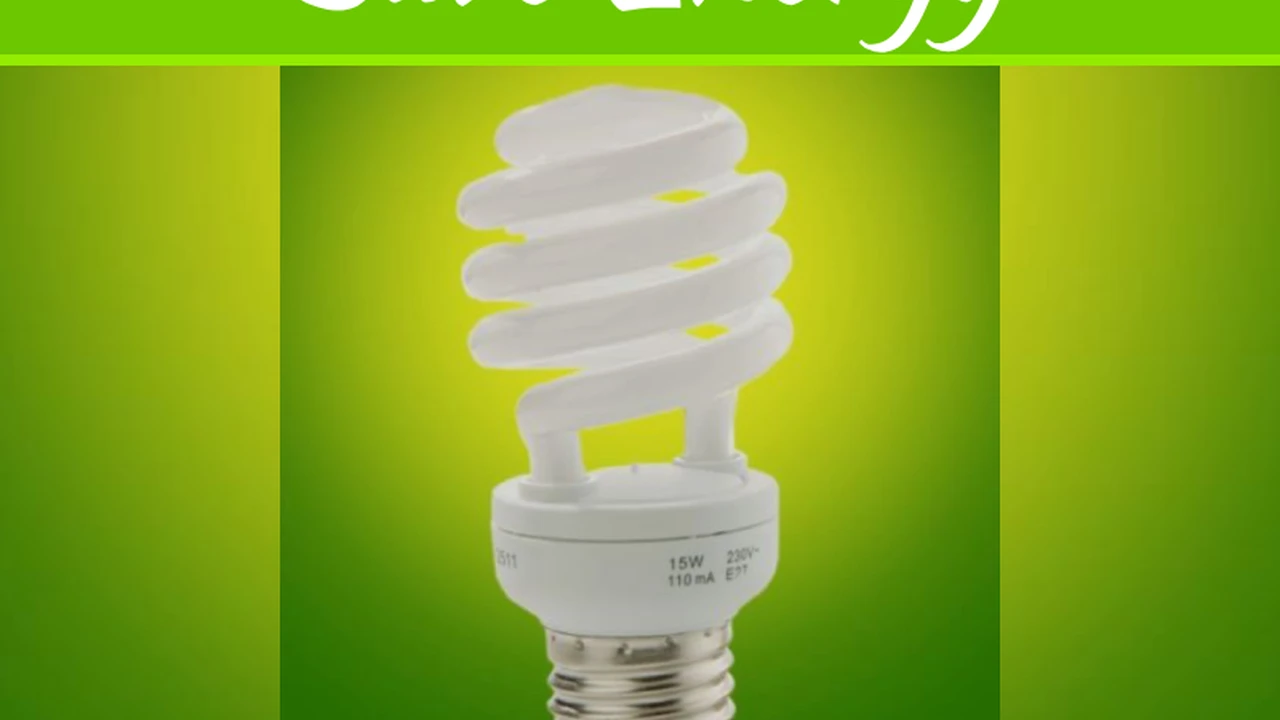Best 7 Sustainable Living Tips for Eco Conscious Homes
Implement these 7 sustainable living tips to create an eco-friendly home and reduce your environmental footprint.

Implement these 7 sustainable living tips to create an eco-friendly home and reduce your environmental footprint.
Best 7 Sustainable Living Tips for Eco Conscious Homes
Hey there, eco-warriors and aspiring green gurus! Want to make your home a little more planet-friendly? You're in the right place. Sustainable living isn't just a buzzword; it's a lifestyle that benefits both you and Mother Earth. It's about making conscious choices that reduce your environmental impact, conserve resources, and promote a healthier future. And guess what? It doesn't have to be complicated or expensive. We're going to dive into seven super practical tips that you can start implementing today to transform your home into an eco-conscious haven. We'll even throw in some product recommendations, usage scenarios, and price comparisons to help you on your way. Let's get started!
Reduce Reuse Recycle Your Way to a Greener Home
This is the golden rule of sustainability, and for good reason. Reducing consumption, reusing items, and recycling properly are fundamental steps to minimizing waste. Think about it: every item you buy has an environmental cost, from its production to its disposal. By reducing what you buy, you lessen that impact. Reusing extends the life of products, keeping them out of landfills. And recycling ensures materials can be repurposed, saving energy and resources.
Practical Tips for Reducing Waste
- Say No to Single-Use Plastics: This is a big one. Think reusable water bottles, coffee cups, and shopping bags. Keep them handy in your car or by the door so you never forget.
- Buy in Bulk: For pantry staples like rice, pasta, nuts, and even cleaning supplies, buying in bulk often means less packaging. Bring your own containers to bulk stores if possible.
- Compost Food Scraps: Food waste in landfills produces methane, a potent greenhouse gas. Composting turns your food scraps into nutrient-rich soil for your garden.
- Repair Before Replacing: Got a wobbly chair or a torn shirt? See if you can fix it before tossing it and buying new. There are tons of DIY tutorials online.
Product Spotlight Reusable Bags and Containers
Let's talk about some specific products that can help you reduce your reliance on single-use items.
Stasher Reusable Silicone Bags
These are fantastic for food storage, meal prep, and even cooking. They're made from platinum silicone, which is food-grade, freezer-safe, microwave-safe, and dishwasher-safe. They come in various sizes, from snack to half-gallon.
- Usage Scenario: Pack your kids' lunches, store leftovers, marinate meat, or even sous vide.
- Comparison: Much more durable and versatile than traditional plastic zip-top bags. They don't leach chemicals into your food.
- Price: A 4-pack (various sizes) typically ranges from $40-$60 USD.
Hydro Flask Water Bottles
A classic for a reason. These insulated stainless steel bottles keep your drinks cold for up to 24 hours and hot for up to 12. They're incredibly durable and come in a wide range of colors and sizes.
- Usage Scenario: Take it to the gym, work, school, or on hikes. Stay hydrated without buying single-use plastic bottles.
- Comparison: Many brands offer similar insulated bottles (e.g., Stanley, Yeti). Hydro Flask is known for its quality and wide mouth opening, making it easy to clean and add ice.
- Price: A 32 oz bottle typically costs around $45-$55 USD.
Embrace Energy Efficiency Smart Choices for Lower Bills
Your home's energy consumption is a major contributor to your carbon footprint. From lighting to heating and cooling, there are countless ways to make your home more energy-efficient, which not only helps the planet but also saves you money on utility bills. It's a win-win!
Key Areas for Energy Savings
- LED Lighting: Swap out old incandescent bulbs for LEDs. They use significantly less energy and last much longer.
- Smart Thermostats: These devices learn your habits and adjust temperatures automatically, optimizing energy use.
- Unplug Phantom Loads: Many electronics draw power even when turned off (e.g., phone chargers, TVs, coffee makers). Unplug them or use power strips with on/off switches.
- Insulation and Weatherstripping: Proper insulation in walls and attics, along with sealing gaps around windows and doors, prevents heat loss in winter and heat gain in summer.
Product Spotlight Smart Thermostats and LED Bulbs
Google Nest Learning Thermostat
This smart thermostat learns your preferred temperatures and creates a schedule for you, saving energy when you're away or asleep. It can be controlled remotely via your smartphone.
- Usage Scenario: Set it up once, and it intelligently manages your home's heating and cooling, adapting to your routine.
- Comparison: Competitors like Ecobee offer similar features, often with remote sensors to monitor temperature in different rooms. Nest is known for its sleek design and user-friendly interface.
- Price: Around $200-$250 USD.
Philips Hue Smart LED Bulbs
These aren't just energy-efficient; they're also smart! You can control them with your phone, set schedules, dim them, and even change their color. They use significantly less energy than traditional bulbs.
- Usage Scenario: Create different lighting moods, automate your lights to turn on/off when you're away, or simply enjoy the energy savings.
- Comparison: Many brands offer smart LED bulbs (e.g., Sengled, Govee). Philips Hue is a premium option known for its reliability, wide ecosystem, and excellent color reproduction.
- Price: A starter kit (hub + 2-3 bulbs) can be $70-$100 USD, individual bulbs around $15-$50 USD depending on features.
Conserve Water Every Drop Counts
Water is a precious resource, and conserving it at home is crucial for sustainable living. From your shower to your garden, there are many opportunities to reduce your water footprint without sacrificing comfort.
Simple Water Saving Habits
- Fix Leaks Promptly: Even a small drip can waste gallons of water over time.
- Take Shorter Showers: Aim for 5-10 minutes. Consider installing a low-flow showerhead.
- Turn Off the Tap: While brushing your teeth, washing dishes, or shaving, turn off the water when not actively using it.
- Run Full Loads: Only run your dishwasher and washing machine when they are full.
- Water Your Garden Wisely: Water early in the morning or late in the evening to reduce evaporation. Consider drought-tolerant plants.
Product Spotlight Low Flow Fixtures
Delta Faucet WaterSense Shower Head
WaterSense certified showerheads use significantly less water than standard models while still providing a satisfying shower experience. This Delta model often features a pause button for even more savings.
- Usage Scenario: Replace your old showerhead to instantly reduce water consumption during showers.
- Comparison: Many brands offer WaterSense certified showerheads. Look for models with good pressure and spray patterns despite lower flow rates.
- Price: Typically $30-$70 USD.
Kohler Dual Flush Toilets
These toilets offer two flush options: a partial flush for liquid waste and a full flush for solid waste, saving a significant amount of water over time compared to single-flush models.
- Usage Scenario: When replacing an old, inefficient toilet, a dual-flush model is a smart eco-friendly upgrade.
- Comparison: Many manufacturers offer dual-flush toilets. Look for models with good flushing power and a comfortable height.
- Price: Can range from $200-$500+ USD depending on features and design.
Choose Sustainable Products Conscious Consumerism
Every purchase you make is a vote for the kind of world you want to live in. By choosing products that are ethically sourced, made from sustainable materials, and produced with minimal environmental impact, you support businesses that prioritize sustainability.
What to Look For
- Certifications: Look for labels like Fair Trade, Organic, FSC (Forest Stewardship Council), or Energy Star.
- Materials: Opt for natural, renewable, or recycled materials like bamboo, organic cotton, recycled plastic, or reclaimed wood.
- Durability: High-quality, long-lasting products reduce the need for frequent replacements.
- Local and Seasonal: Buying local reduces transportation emissions and supports your community.
Product Spotlight Eco-Friendly Cleaning and Textiles
Blueland Cleaning Products
Blueland offers cleaning products in tablet form. You buy a reusable bottle once, and then simply refill it with water and a tablet. This drastically reduces plastic waste from single-use cleaning bottles.
- Usage Scenario: Replace your traditional multi-surface cleaner, glass cleaner, and bathroom cleaner with these eco-friendly alternatives.
- Comparison: Other brands offer concentrated refills or plant-based cleaners. Blueland's tablet system is particularly innovative for waste reduction.
- Price: A starter kit (bottles + tablets) is around $30-$40 USD, refills are much cheaper.
Boll & Branch Organic Cotton Sheets
These sheets are made from 100% organic cotton, which means no harmful pesticides or chemicals were used in their production. They are also Fair Trade certified, ensuring ethical labor practices.
- Usage Scenario: Upgrade your bedding for a healthier sleep environment and support sustainable farming practices.
- Comparison: Many brands offer organic cotton sheets. Boll & Branch is known for its luxurious feel and strong commitment to ethical sourcing.
- Price: A queen sheet set can range from $200-$300+ USD.
Grow Your Own Food A Taste of Sustainability
There's nothing quite like eating food you've grown yourself. Gardening, even on a small scale, reduces your reliance on commercially produced food, cuts down on transportation emissions, and connects you more deeply with nature. Plus, it's incredibly rewarding!
Getting Started with Gardening
- Start Small: A few herbs on a windowsill or a couple of tomato plants in pots are great starting points.
- Choose Easy Crops: Herbs (basil, mint), lettuce, radishes, and cherry tomatoes are relatively easy for beginners.
- Compost: Use your homemade compost to enrich your garden soil.
- Rainwater Harvesting: Collect rainwater in a barrel to water your plants, reducing your reliance on tap water.
Product Spotlight Composting and Rain Barrels
VermiHut Worm Composter
This multi-tray worm composter allows you to turn your food scraps into nutrient-rich worm castings (a fantastic fertilizer) right in your home or backyard. It's odorless and efficient.
- Usage Scenario: Ideal for urban dwellers or anyone who wants to compost food waste without a large outdoor pile.
- Comparison: Other composters include traditional bins or tumblers. Worm composters are great for smaller spaces and produce high-quality fertilizer quickly.
- Price: Around $100-$150 USD.
Good Ideas Rain Wizard Rain Barrel
This 65-gallon rain barrel collects rainwater from your downspout, providing a free and sustainable source of water for your garden or outdoor cleaning tasks.
- Usage Scenario: Connect it to your gutter downspout to collect rainwater for watering plants, washing your car, or other outdoor uses.
- Comparison: Many sizes and styles of rain barrels are available. Look for durable, UV-resistant models with a good spigot and overflow protection.
- Price: Typically $100-$200 USD.
Support Local and Ethical Businesses Vote with Your Wallet
Beyond just the products themselves, consider where you're buying them from. Supporting local businesses reduces transportation emissions and keeps money circulating within your community. Choosing ethical businesses means supporting companies that prioritize fair labor practices, environmental responsibility, and transparency.
How to Be a Conscious Shopper
- Farmers Markets: Buy fresh produce directly from local farmers.
- Local Boutiques: Discover unique items and support small business owners.
- Research Brands: Before making a significant purchase, do a quick search to see if the company has a strong commitment to sustainability and ethical practices.
- Secondhand First: For clothing, furniture, and many other items, check thrift stores, consignment shops, or online marketplaces before buying new.
Educate Yourself and Others Spread the Green Word
The more you learn about sustainable living, the more empowered you become to make impactful changes. And don't keep that knowledge to yourself! Share what you learn with friends, family, and your community. Every conversation, every shared tip, helps to build a more sustainable future.
Ways to Learn and Share
- Read Books and Articles: Dive deeper into topics like permaculture, zero waste, or renewable energy.
- Watch Documentaries: Many inspiring films explore environmental issues and solutions.
- Join Local Groups: Connect with others in your community who are passionate about sustainability.
- Lead by Example: Your actions speak louder than words. When your friends see your eco-friendly habits, they might be inspired to adopt some themselves.
Making your home more eco-conscious is a journey, not a destination. Start with small, manageable changes, and gradually build up your sustainable habits. Every little bit helps, and together, we can make a significant difference for our planet. Happy green living!
:max_bytes(150000):strip_icc()/277019-baked-pork-chops-with-cream-of-mushroom-soup-DDMFS-beauty-4x3-BG-7505-5762b731cf30447d9cbbbbbf387beafa.jpg)






